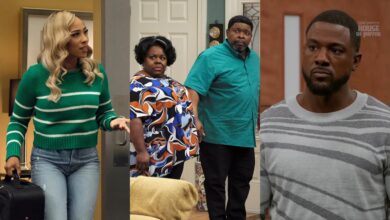Tyler Perry’s House of Payne | Did The Original Series Have An Awkward Sense of Tone?
This critique of House of Payne highlights a recurring issue in sitcoms that aim to juggle comedy with serious social themes. Let’s unpack the points raised and dive deeper into the conversation:
Key Issues Highlighted
- Jarring Tone Shifts
- House of Payne often switches abruptly between light-hearted comedy and heavy, serious topics like teen pregnancy, SA, or online predation.
- There’s little to no transition between these themes, leaving viewers confused about the intended emotional tone.
- Inconsistent Use of Laugh Tracks
- The laugh track sometimes fails to match the moment:
- Hilarious jokes might receive no response.
- Mediocre jokes get excessive laughter.
- Episodes like the one where Malik encounters a predator online lack audience or musical cues to signal tension or drama, leaving viewers unsure of how to react.
- The laugh track sometimes fails to match the moment:
- Editing and Production Oversights
- Episodes, like the season premiere “New Money,” aired without a laugh track entirely, resembling a live stage play without the audience’s energy.
- These moments break immersion, as sitcoms typically rely on laugh tracks or live audience reactions to guide viewers.
Broader Context in Sitcoms
The critique of House of Payne could apply to other sitcoms that attempt to balance humor and serious topics:
- Shows like Fresh Prince of Bel-Air or Different Strokes addressed heavy themes but incorporated tonal shifts with care. They often used dramatic pauses, emotional music, or well-placed audience reactions to signal the gravity of the moment.
- Modern sitcoms, such as Fuller House, sometimes struggle with this balance, leading to tonal whiplash when episodes alternate between comedy and drama without proper transitions.
Why Does This Happen?
- Format Challenges
- Sitcoms traditionally aim to entertain, so weaving in serious issues can feel unnatural without skilled writing and production choices.
- When serious moments aren’t given the weight they deserve, it can make the storytelling feel disjointed.
- Audience Expectation
- Sitcom audiences often anticipate comedy first. Abrupt shifts to serious themes without preparation can feel out of place.
- The lack of cues (like music or audience reactions) exacerbates the disconnect.
- Production Constraints
- Tight production schedules or editing oversights (e.g., forgetting to add laugh tracks or music) can lead to episodes that feel incomplete or awkwardly paced.
Suggestions for Improvement
- Better Transitional Elements
- Use music or visual cues to guide the audience through tonal changes.
- Introduce moments of levity gradually, rather than cutting from a serious scene to a punchline.
- Audience and Laugh Track Refinement
- Ensure laugh tracks are used appropriately and align with the intended emotional beats.
- Dedicated Thematic Episodes
- Focus episodes on either comedy or drama rather than blending them unevenly. This approach allows serious topics to be addressed with the gravity they deserve while maintaining the sitcom’s comedic foundation.
Final Thoughts
While House of Payne is beloved for its relatable characters and willingness to tackle real-world issues, its abrupt tone shifts and inconsistent laugh track use can undermine its impact. By refining transitions and leveraging production techniques, the show—and others like it—could achieve a more cohesive balance between humor and heartfelt storytelling.
What do you think about this critique? Are these tonal shifts an issue, or do they add to the show’s charm? Let’s discuss!





